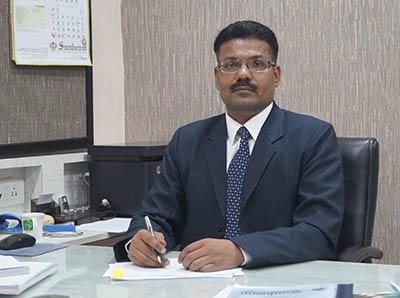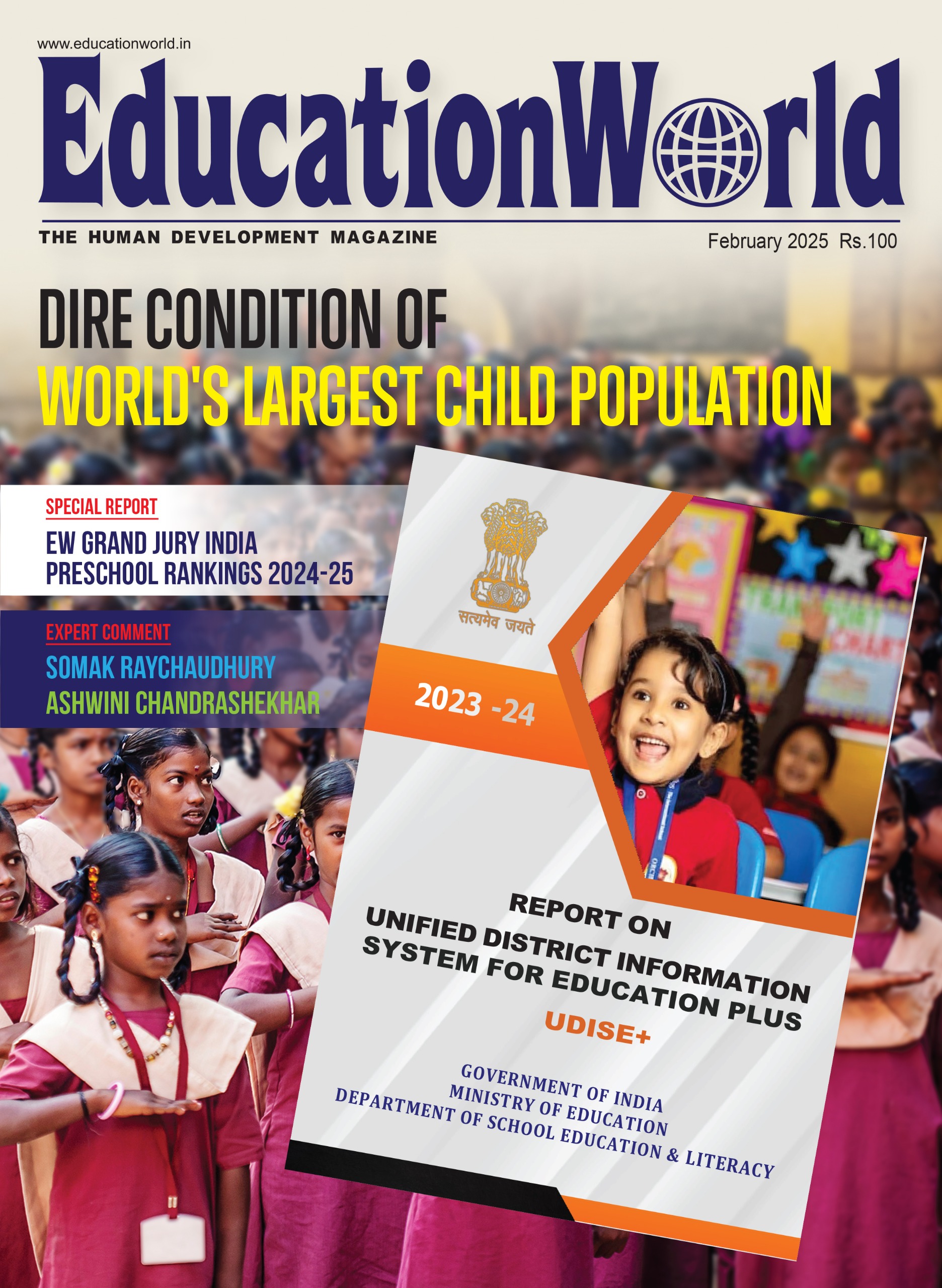
With Artificial Intelligence (AI) making rapid inroads into the global education space, today’s youth are as much in awe of AI as they are keen on leveraging the technology to enhance their learning experience. Given that AI is based on a complex programme built to mimic the cognitive functions between two human brains, it comes handy around the problem solving premises of a learning structure. However, before we accept AI as an indispensable learning tool, we need to first understand the learning process and where and how AI could actually add value in this process.
The learning process varies widely between different students but we can broadly classify learners into three types – Quick Learners, Slow Learners and Passive Learners. For achieving the desired learning outcomes, AI as a learning tool can be leveraged in distinct ways for these three categories of learners as elaborated below.
Quick Learners: AI, which aims at adding more to what is conventional, works like a magic wand for this category of learners who draw up maximum amount of learning within a very short span of time. Contrary to the apprehensions regarding untoward influence of technology among such kids, technology can prove be a great learning aid for them. They don’t need to compete with their mediocre peers or be assessed for going levels up the latter in an AI learning environment. As the natural drive of these learners towards learning facts, picking up nuggets of knowledge, retaining huge knowledge banks and very effectively reproducing them in a much enhanced shape and feature, is very high, they are often labelled as inattentive in their classrooms or even class bunkers. Whereas, in a given learning environment, while others are still grasping the concepts, these kids are already extrapolating. Hence an AI based learning tool which processes and reproduces information and knowledge a zillion times faster than an ace teacher works very well for this category of learners. An AI system incorporated educational environment facilitates finding, searching, deriving, calculating, strategising and localising in a much more scientific way and with higher accuracy than any other learning environment. If a batch of high IQ students is working in a closed group network for sharing and exploring knowledge, the AI system starts actually learning and adapting with the team, starts reading the group dynamics and begins assimilating and comprehending results on the basis of results and edit history. This enhances the knowledge bank for the batch of genius minds who unknowingly create an artificial intelligence learning environment for themselves.
So it is more likely that in the near future, students with higher order thinking skills will prefer learning in an AI environment for better learning outcomes.
Slow Learners: Unlike the quick learners, the slow learners are the patient lot. They take time to grasp, retain and reproduce their learning. In a classroom setup, this is the lot that struggles the most and lags behind the others. Defying the idiom ‘Slow and steady wins the race’, this category of students often ends up being demotivated with not much hope of scaling the learning curve. However, slow learning is a process that is just slow but still is an ongoing one. Hence, effectively designed AI programmes can work wonders for these kids by helping them tutor themselves in the AI environment. For example, teaching languages, specially grammatical implications, coaching for writing ability, helping kids come out with logical reasoning from conflicting idea, clashes etc can be very effectively handled with the help of a user friendly artificially intelligent programme. Slow learners often refrain from being evaluated by traditional test series as they fear the results. If placed in an environment of self-assessing AI suite, these kids would love to take such tests time and again as every time they take a test, they get to actually realise their progress without being judged by human teachers. Learning concepts of physics and other physical sciences would be much easier with a robo-buddy who is programmed to match the learning pace of the kids. AI predictions, inferences on the basis of past history of the users, localised preferences of the researchers, interacting with info generators – all these add to building a stronger knowledge base for slow learners thereby enabling them to stand at par with their peers. Trial and error learning becomes threat free for these kids in an AI learning environment. Since slow learners generally maintain traits of exclusion like being introvert, not being upcoming and open with all, AI robots can also train them to adapt to changes around them. By subjecting such kids to specially devised AI based learning modules, parents and teachers can have better grip on their progress and can hence create a very positive and powered environment for these kids. As AI is intrinsic to all social media platforms, these kids can be taught and trained many skills by positively channelising the power of social media. Solving problems of complex and varied nature is always difficult for slow learners and problem solving ability is the basic premise on which AI works. Hence the match. In a well customised AI learning environment, slow learners will no more think that they are not efficient enough or are slow in solving a problem compared to others. Infact, they gradually become learners from slow learners and hence the problem of delayed cognizance to facts gets solved finally.
Passive Learners: Learners of this category learn passively from a source or a teacher of their preference and they internalise the knowledge without actively seeking feedback or interaction from the teacher or source of knowledge. In classroom setups where interaction between the learner and the teacher is missing or is meagre, learning is passive. Passive learning is very effective for certain domains of knowledge where argumentative analysis of subjects/situations is not required. Programming AI modules for passive learners may be a challenge as due to lack of interaction between the teacher and the learner, it becomes difficult for the programmer to conclude whether his AI modules have been effective in facilitating learning.
Learners of higher studies, research scholars and explorers of various places and subjects can benefit immensely from an AI programme for passive learners. Passive learners largely depend on audio visual learning aids which are generally documented in form of lectures. A robot demonstrating the process of a surgery to a pack of doctors is a good example of a widely used AI tool for passive learners. Conventionally speaking, in a classroom setup of a school, a learner is a passive learner if the teacher is not an active one. Although passive is just another process of learning, it is not appreciated by a majority of school students as they look forward to both fun and fire in the learning process.
What the future holds
 The journey of AI notably began in Dartmouth College in 1965 and today, AI is neatly tucked in our pockets travelling with us and assisting us in various ways in our daily life. Although AI is undeniably set to rule the classrooms of the future – both virtual and physical, it will never be able to replace our need for teachers. All said and done, there still lies a difference between knowledge and wisdom. While knowledge can be derived from any source – AI or instructions imparted by a teacher in a traditional classroom setting – we can never turn to a machine for gaining wisdom. Therein lies the indispensability of quality teachers in the 21st century classroom. While Artificial Intelligence is the need of the hour, it can never replace a teacher whose role encompasses not just furnishing of instructions and facts but also instilling ethical and moral values in students.
The journey of AI notably began in Dartmouth College in 1965 and today, AI is neatly tucked in our pockets travelling with us and assisting us in various ways in our daily life. Although AI is undeniably set to rule the classrooms of the future – both virtual and physical, it will never be able to replace our need for teachers. All said and done, there still lies a difference between knowledge and wisdom. While knowledge can be derived from any source – AI or instructions imparted by a teacher in a traditional classroom setting – we can never turn to a machine for gaining wisdom. Therein lies the indispensability of quality teachers in the 21st century classroom. While Artificial Intelligence is the need of the hour, it can never replace a teacher whose role encompasses not just furnishing of instructions and facts but also instilling ethical and moral values in students.
The author is Sandeep Mukerjee, CAO of Varanasi based Sunbeam Group of Educational Institutions.




















